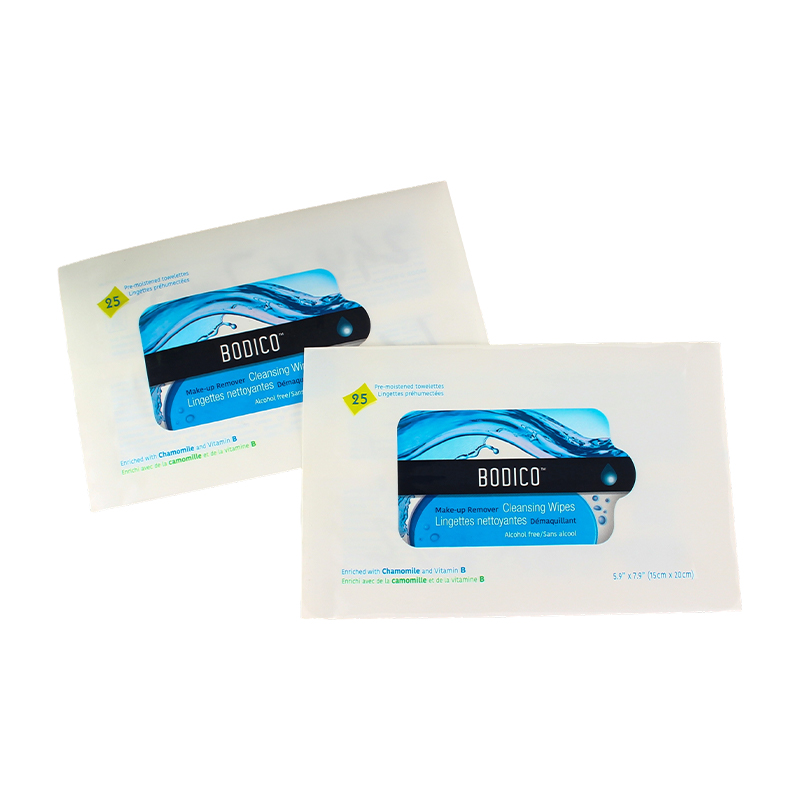2025-07-24
In an era where consumer expectations and industrial demands continue to evolve, the packaging industry is responding with smarter, more efficient solutions. One such innovation gaining momentum in the hygiene and personal care sectors is the Thin Label Top-Opening Wet Wipes Packaging Bag. This packaging format is emerging as a favored choice among manufacturers and consumers alike due to its streamlined design, cost efficiency, and functional benefits.
What Is a Thin Label Packaging Bag?
The Thin Label Top-Opening Bag is a flexible packaging solution characterized by a resealable label opening located on the top surface. Unlike traditional plastic lid closures or bulky cap-seal systems, this design integrates a thin, adhesive-backed film label that serves as a convenient flap for accessing the wipes.
Made primarily from multi-layer composite materials such as PET/PE or BOPP/PE laminates, these bags offer barrier properties while material usage. The result is a sleek, lightweight, and recyclable package that meets modern sustainability targets.
Market Drivers Behind the Shift
The increased use of wet wipes across multiple applications—including baby care, personal hygiene, household cleaning, and industrial settings—has driven the demand for smarter packaging. While traditional flip-top lids offer durability, they add bulk, increase production costs, and are harder to recycle.
The thin label alternative not only addresses these drawbacks but also aligns with consumer preferences for convenience and environmental consciousness. Here are a few key factors influencing the shift:
Material Reduction and Sustainability
One of the main advantages of thin label packaging is the significant reduction in plastic usage. By replacing rigid plastic lids with a laminated film and label system, manufacturers can cut down on material costs and carbon footprint, contributing to more eco-friendly packaging lines.
Cost-Efficiency in Production
The use of fewer components and simpler assembly makes thin label bags more cost-effective in terms of production and transportation. Their lighter weight reduces shipping costs, while high-speed packaging equipment can apply labels efficiently, ensuring scalability for large-scale manufacturing.

Enhanced Shelf Appeal
Thin label bags provide a larger uninterrupted surface area for printing and branding. High-resolution digital printing on flexible films allows for eye-catching, customizable designs that help products stand out on retail shelves.
Consumer Convenience
The resealable label is easy to open and close, preserving moisture inside the bag and reducing the risk of wipes drying out. The top placement offers quick one-hand access, which is especially valuable for parents, healthcare workers, and cleaning professionals.
Industry Adoption and Innovation Trends
Several major players in the hygiene and home care industries have already begun transitioning to thin label top-opening packaging for their wipe products. Global brands are integrating this solution not only for aesthetic appeal but also as part of their sustainability roadmaps.
Meanwhile, packaging manufacturers are refining their offerings by improving adhesive technology, reinforcing label durability, and exploring bio-based films. Some are even experimenting with transparent windows or tactile finishes to add both function and flair.
Challenges and Opportunities
While the thin label format presents numerous benefits, its adoption also comes with considerations. Ensuring the adhesive label retains its seal after multiple uses is crucial. Additionally, the laminated films used must maintain moisture retention comparable to traditional hard-lid packaging. These factors demand precision in material selection and testing.
That said, the opportunities far outweigh the challenges. With consumers and regulatory bodies pushing for greener alternatives, thin label packaging bags are poised to become a long-term solution across various markets. As the technology matures, further improvements in recyclability and compostable materials are expected, opening new avenues for innovation.
Looking Ahead
The packaging industry is clearly in the midst of a transformation—one driven by efficiency, sustainability, and consumer-centric design. The rise of Thin Label Top-Opening Wet Wipes Packaging Bags signals a shift not just in format but in philosophy. Manufacturers who embrace this change are likely to see benefits in cost savings, brand perception, and environmental impact.